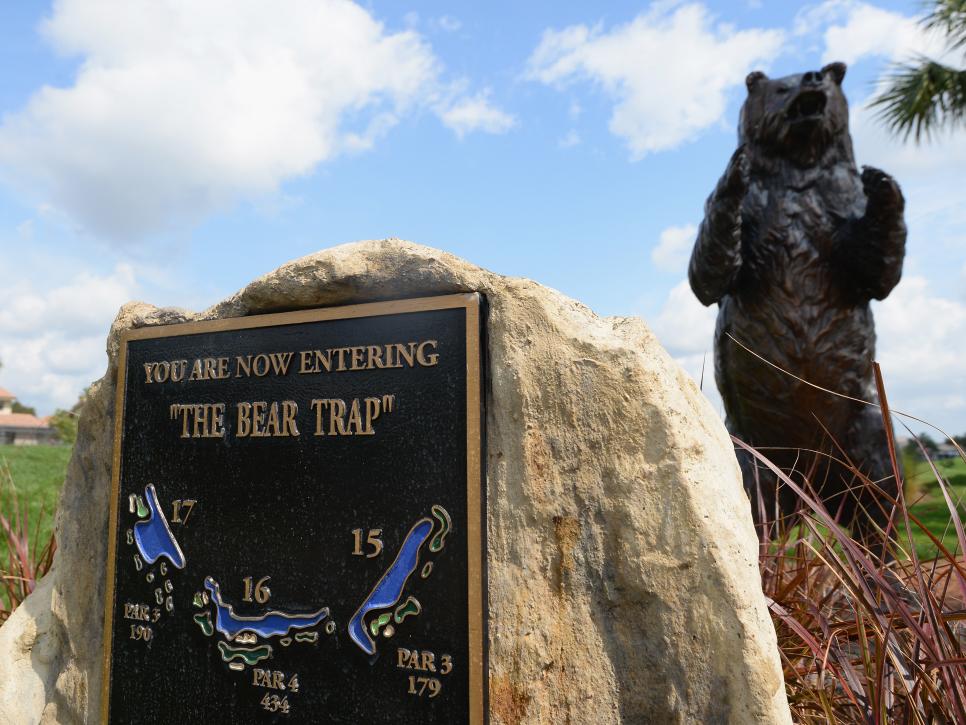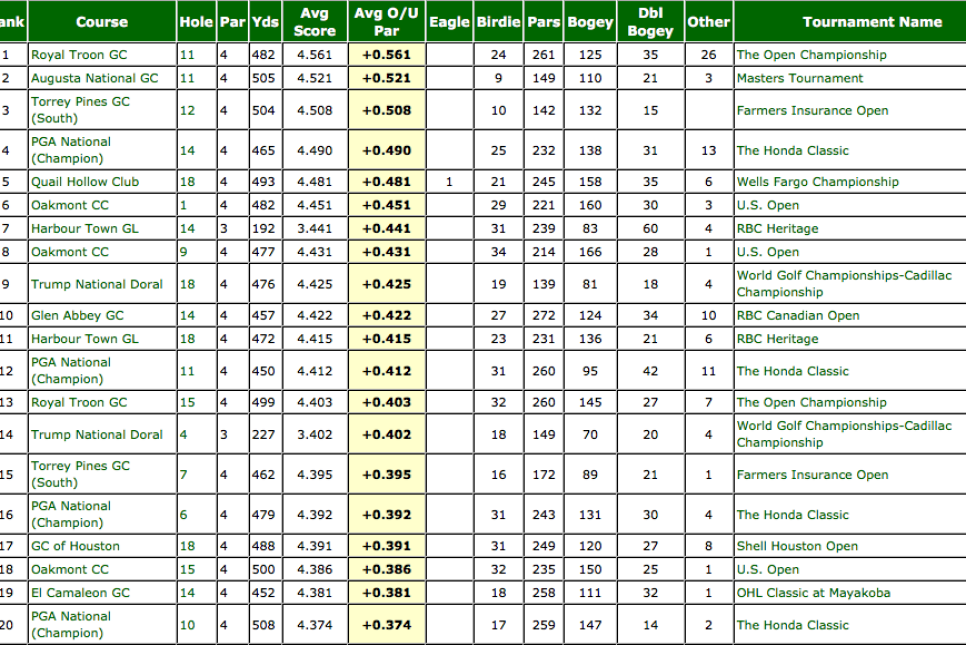News
Numbers don't lie: PGA National, site of Honda Classic, is a player's nightmare

Getty Images
If you polled casual golf fans, "What is the toughest stretch in golf?" a handful of responses would be universal. Amen Corner. The closing three holes at Sawgrass. The Cliffs of Doom. All valid answers. Yet, a formidable group often lost in the bunch is PGA National Golf Club's "Bear Trap."
Due to the constant mentions of the "Bear Trap" by network coverage, some roll their eyes at PGA National, feeling as if these three holes are more bark than bite. And on paper, two par 3s under 200 yards and a 430-yard par 4 don't frighten, given the length of the modern tour pro. But the yardages fail to convey the severe slopes of the greens, the chaos caused by swirling winds in this corridor of Palm Beach Gardens, or the ever-present water hugging each hole's boundaries. The "Bear Trap" is summed up best by PGA National redesigner Jack Nicklaus, whose words meet players on a plaque at the 15th tee box: "It should be won or lost right here."
The numbers support Nicklaus' declaration. In last year's Honda Classic, the field made 163 birdies against 286 bogeys or worse. Adam Scott, the event's winner, traversed the "Bear Trap" without major incident; Sergio Garcia went par-bogey-bogey on Sunday to finish in second by a shot.
Conversely, while the "Bear Trap" has proven more than a marketing ploy, it's far from the course's only teeth. If anything, you can argue -- compared to its PGA National brethren -- it offers players some breathing room. Four PGA National holes ranked among the top-20 hardest in golf last year. Subtract the majors, it's four of the top 14. And amazingly, all four are not part of the "Bear Trap."

As the chart illustrates, PGA National's true "bear" is the 465-yard par-4 14th, a hole spotted with bunkers, out-of-bounds and greenside water. Together, these seven holes -- along with risky propositions at second, fifth and seventh holes -- equated to a plus-1.768 score for the field at the 2016 Honda Classic, making it the second-toughest non-major tournament last year (with the Farmers Insurance Open at Torrey Pines South taking top honors). This was not an aberration; PGA National ranked second in 2015 and first in 2013 in non-major venues. In fact, since the tournament moved to PGA National in 2007, it's ranked among the top-eight most difficult tracks on tour every season but one.
So why doesn't PGA National have the same daunting aura as other tough venues? Mentioned above, though the course hosted the 1983 Ryder Cup and 1987 PGA Championship, it remains relatively "new" to the tour scene. It's place on the calendar doesn't help, sandwiched between either historic Riviera Country Club or an entertaining event in the WGC-Match Play and, until this season, a beloved course in Doral. A mixed bag of winners -- Rory McIlroy, Adam Scott, Ernie Els are highlights against more run-of-the-mill players in Mark Wilson, Russell Henley and Camilo Villegas -- hasn't boosted its cause, either.
Nevertheless, true enthusiasts recognize the difficulty of PGA National. Many view the end of the West Coast Swing as the unofficial countdown to Augusta National, making the Honda Classic the de facto kickoff to green jacket preparation. And what better practice for the rigors of Masters Sunday than one of golf's hardest tests.